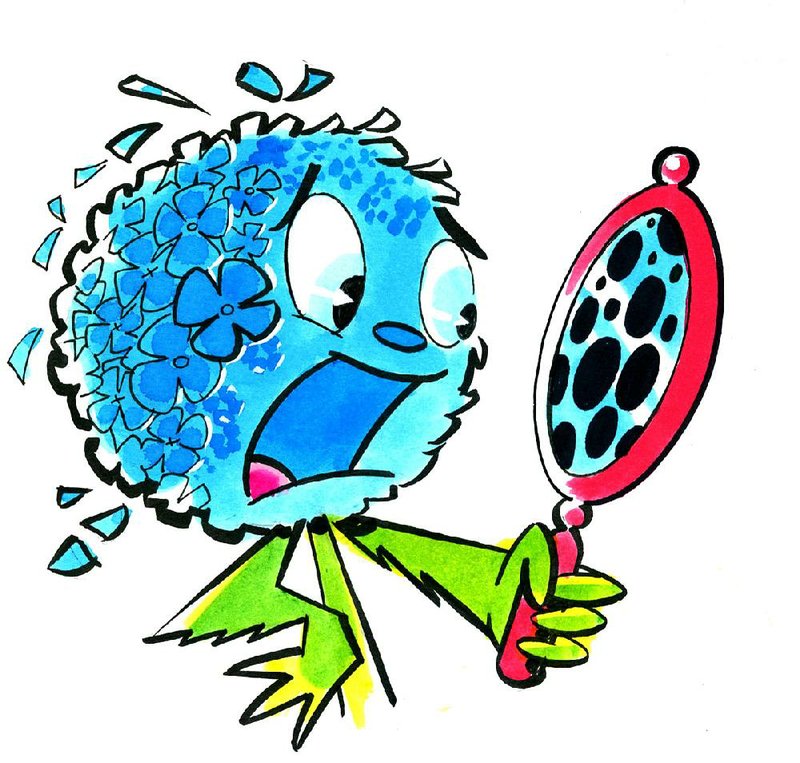Q I have hydran-geas that are beautiful for a couple of months ... say, June and July ... and then the leaves get black spots all over them. Is there something I should do before the spring/summer actually begins to avoid the spots? I forgot to remove some of the flowers at the end of the summer. What shall I do now? I do not want to lose the flowers for this year's blooming.
A Many hydrangea plants get cercospora leaf spot disease, but it usually happens so late in the year that we don't recommend spraying. If your plants get leaf spot every year early in the season, you might try a preventive fungicide. Spray with a product containing chlorothalonil (Daconil) when the leaves are fully formed. Then spray after the flowers begin to fade, and see what happens. To keep them totally clean all season may require more applications, but I would not want to spray that often. For hydrangeas that still have spent blooms, simply clip off the bloom without damaging any buds that are behind it, since the flower buds are at the tips of the branches.
Q We planted two azaleas last year. Yesterday, I noticed that their leaves are getting spots and some are yellow. I do not want to lose them. What should I do?
A If there is any damage to the foliage of a shrub now, it is carry-over from last season. New plants often go through a bit of a transition while they are getting established their first year. They are not getting new diseases yet. The yellowing leaves can simply be leaf shed of the older foliage -- on azaleas that often happens in the fall, but they can shed old leaves at any time. Let the plants bloom this spring and then assess if they need pruning. If so, prune them as soon after flowering as possible. Fertilize after bloom as well. Then monitor the plants for the growing season and see how they do. If you see new spots, then you can assess the need to spray, but I bet they will be fine.
Q We have poison oak growing under a 20-foot, berry-bearing holly tree. How can I rid the tree of the poison oak without damaging or killing our beautiful tree?
A Wear protective clothing and pull out as much of it as you can. Then you can paint or spray Roundup solution on the foliage that remains this spring when new growth begins, directing the product just to the poison oak or ivy and making sure you don't get any on the foliage of the holly. One application will not control it, but if you keep after it this season and put one last application out in September, you can get a handle on it. Roundup will not move in the soil, so as long as you don't get it on the holly foliage, the tree should be OK.
Q Our Star magnolia started showing problems in late August and September last year. The leaves started dying. It is blooming now, but the blooms seem to be about half the size as in the past. I think that this may be its "last hurrah." Is there any hope for our Star magnolia? It has always been the first thing to bloom in late winter, and it is beautiful.
A Did you water it during that time period? This past September was the driest September we have ever had. If the plant got too stressed, that could have caused the leaves to die back early and would have affected the bloom this spring, since fall is when spring-flowering plants set flower buds. This season, fertilize it after bloom, then water as needed all summer and see what happens.
Janet B. Carson is a horticulture specialist for the University of Arkansas Cooperative Extension Service. Write to her at 2301 S. University Ave., Little Rock, Ark. 72204 or email her at
jcarson@arkansasonline.com
HomeStyle on 03/05/2016
